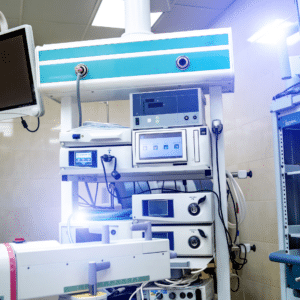
Navigating the intricate world of medical devices can be daunting, especially when it comes to ensuring their safety and effectiveness. In the United States, the FDA 510(k) clearance process is the critical checkpoint manufacturers must pass before introducing medical devices. This article will break down the regulatory complexities of FDA 510(k) clearance, including submission requirements, classification, and more.
1. Decoding the FDA 510(k) Clearance: What Does It Mean?
At its core, FDA 510(k) clearance is the pathway through which manufacturers gain approval to sell their medical devices in the U.S. This regulatory process is named after Section 510(k) of the Food, Drug, and Cosmetic Act, which outlines the requirements that must be met to obtain this clearance. Essentially, it’s the FDA’s way of ensuring that new or modified medical devices are safe and effective.
2. What’s Needed for Submission?
Manufacturers must embark on a detailed journey when submitting a 510(k) premarket notification to the FDA. This submission is a comprehensive dossier that provides evidence that the device is substantially similar to an already legally marketed device, known as a “predicate device.” The submission includes information about the device, labeling, and any proposed changes.
3. Understanding Device Classification: How Risk Plays a Role
One of the first crucial steps in this process is determining the classification of the medical device. The FDA classifies devices into three categories—Class I, II, and III—based on their complexity and level of risk. This classification dictates the level of regulatory scrutiny and the type of evidence required for clearance.
4. Substantial Equivalence: The Heart of the Matter
Substantial equivalence is the linchpin of the 510(k) clearance process. Manufacturers must present compelling evidence showcasing how their device is akin to the predicate device, including aspects like safety, performance, and technological distinctions.
5. Quality Matters: Embracing Quality System Regulations (QSR)
Ensuring the quality of medical devices is paramount. The FDA’s Quality System Regulations (QSR), outlined in 21 CFR Part 820, dictate manufacturers’ standards. These standards encompass everything from design and manufacturing practices to labeling and post-market surveillance.
6. Clinical Data and Testing: Ensuring Safety and Effectiveness
Clinical data may be required depending on the device’s classification and any variances from the predicate device. This data includes bench testing, animal studies, or clinical trials. It’s the bedrock upon which safety and effectiveness claims are built.
7. The FDA Review Journey: A Dialogue with Experts
After the submission, the FDA performs a thorough review, examining the device’s scientific, technical, and clinical aspects. This is also when manufacturers discuss with the FDA to address any questions or concerns.
8. Beyond Clearance: Your Health in Focus
When the FDA issues a 510(k) clearance letter, it signifies the device’s green light for the U.S. market. However, the story doesn’t end there. Manufacturers uphold post-market surveillance and reporting requirements to ensure your safety and the device’s ongoing effectiveness. Manufacturers should know the steps or partner with a regulatory consultant to provide medical devices that have a real and positive impact on their target consumers.
Our experts at Quality Smart Solutions are here to help and offer medical device-related regulatory advice and support on successfully securing your medical device license. We can help you by responding to potential information requests, keeping your license updated, and reviewing your device labels (510k Medical Device Registration, Facility Registration & FURLS, IVD Device Registration, and SaMD Classification.
To learn when and how to file your 510k submissions click here:


